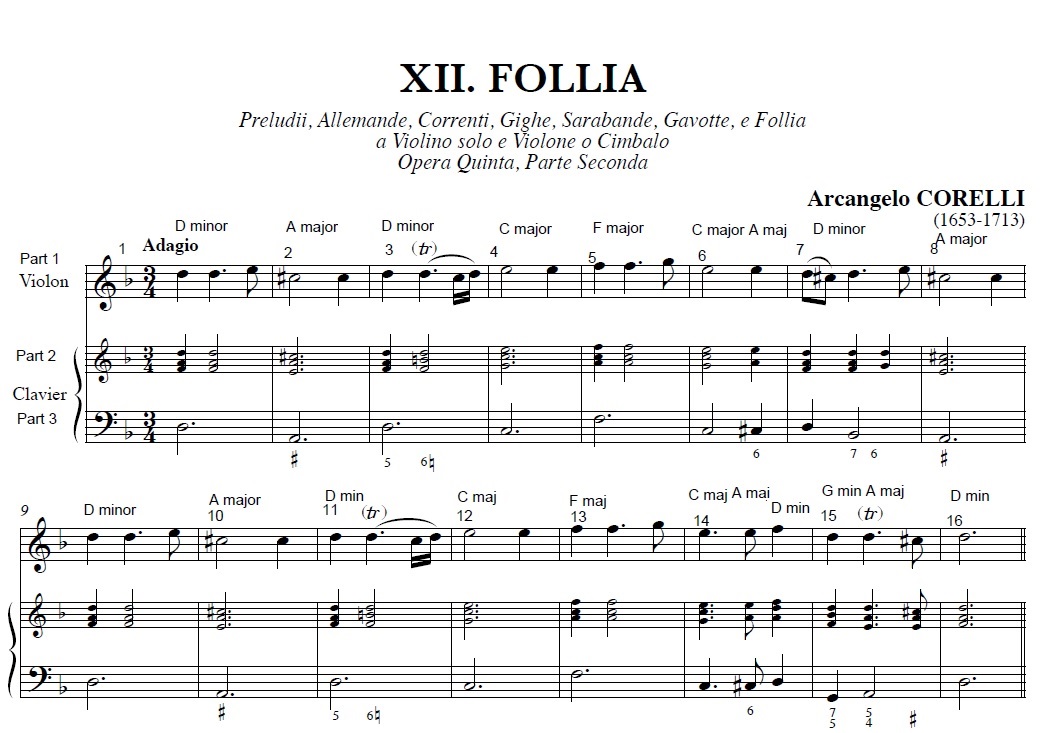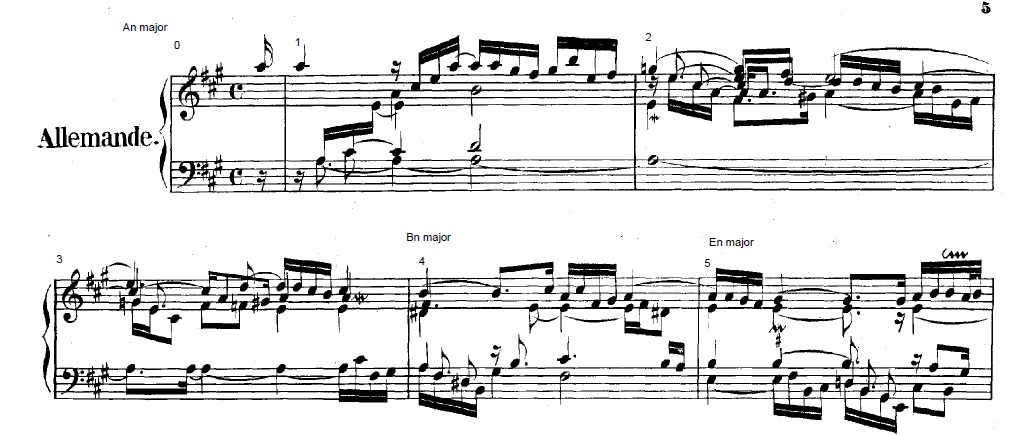I present here some variations on Arcangelo Corelli’s Folia Opus 5, a piece written just prior to 1700, for violin and continuo. Folia is a chord progression well used in the 15th and 16th centuries by a variety of composers. Think of it as the 12-bar blues of early classical music tradition. Corelli’s version is a theme with 23 variations. My version intersperses the theme with the variations, as I did with the Allemande.
This version is scored for my microtonal slide Bosendorfers, realized in Csound. The tuning uses two otonalities (based on C & F), one utonality (D), plus a few mixed tunings (an A major based on the F otonality, and G minor based on the C otonality) from the 31-limit diamond.
or download here:
Follia #6




